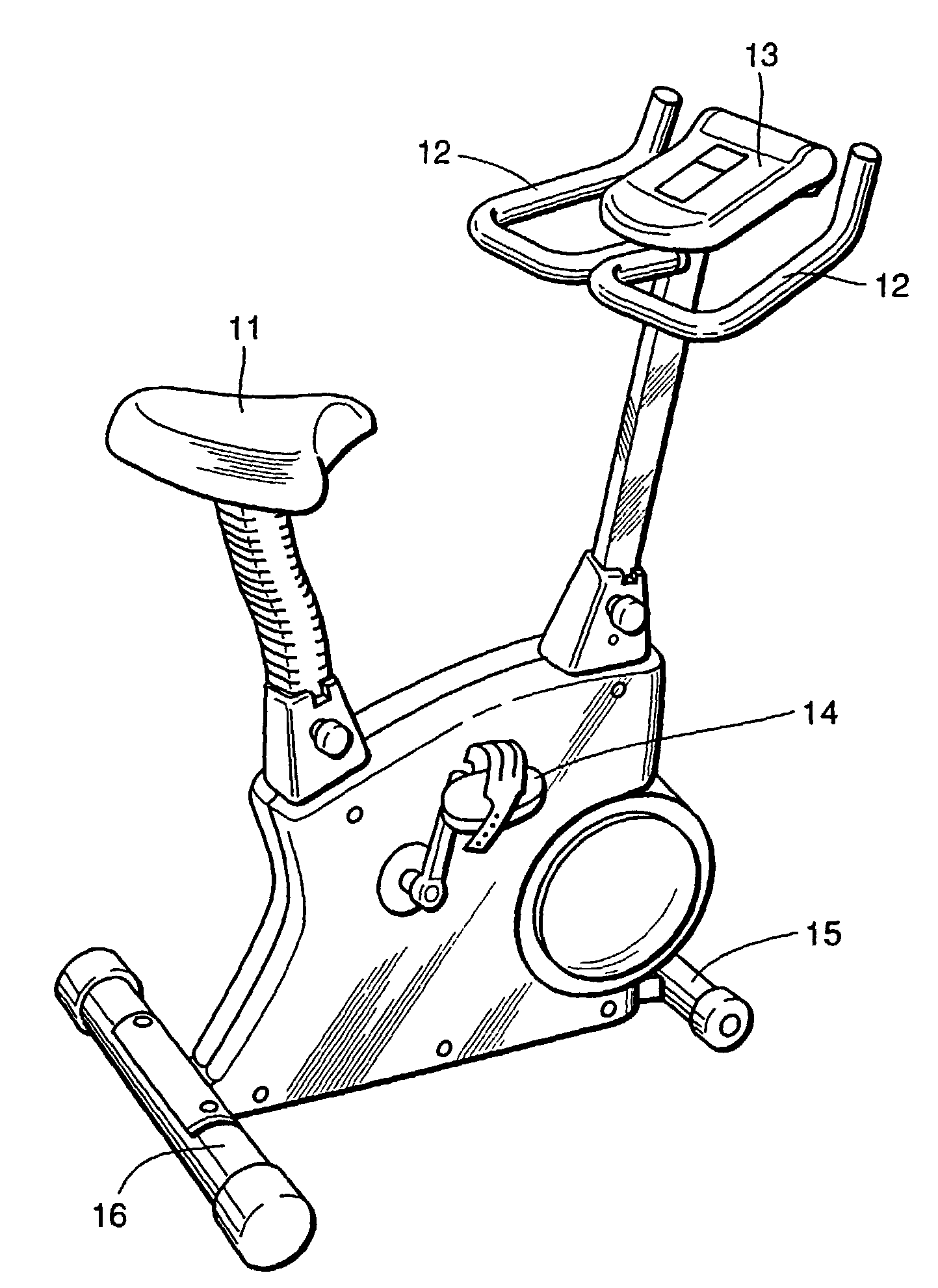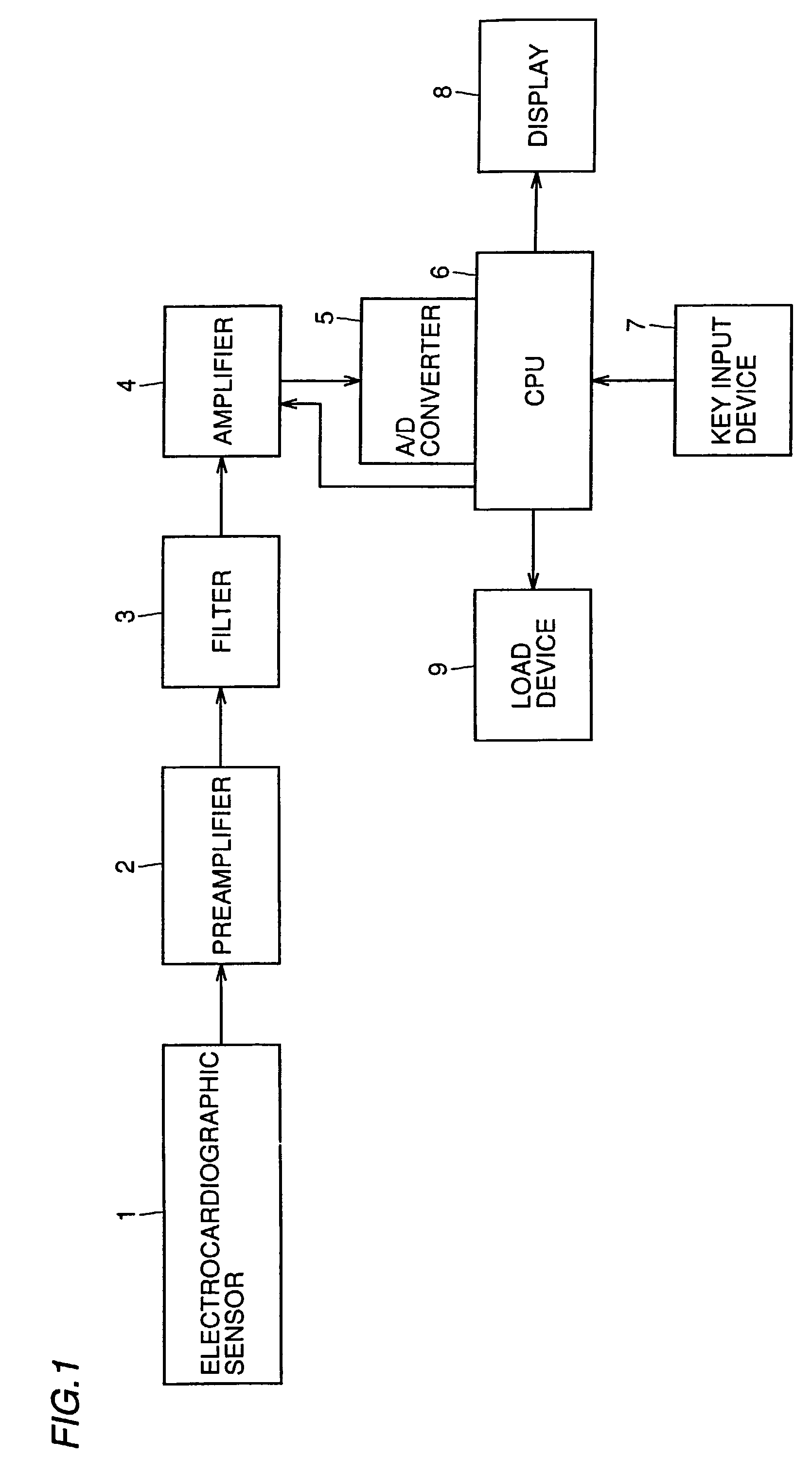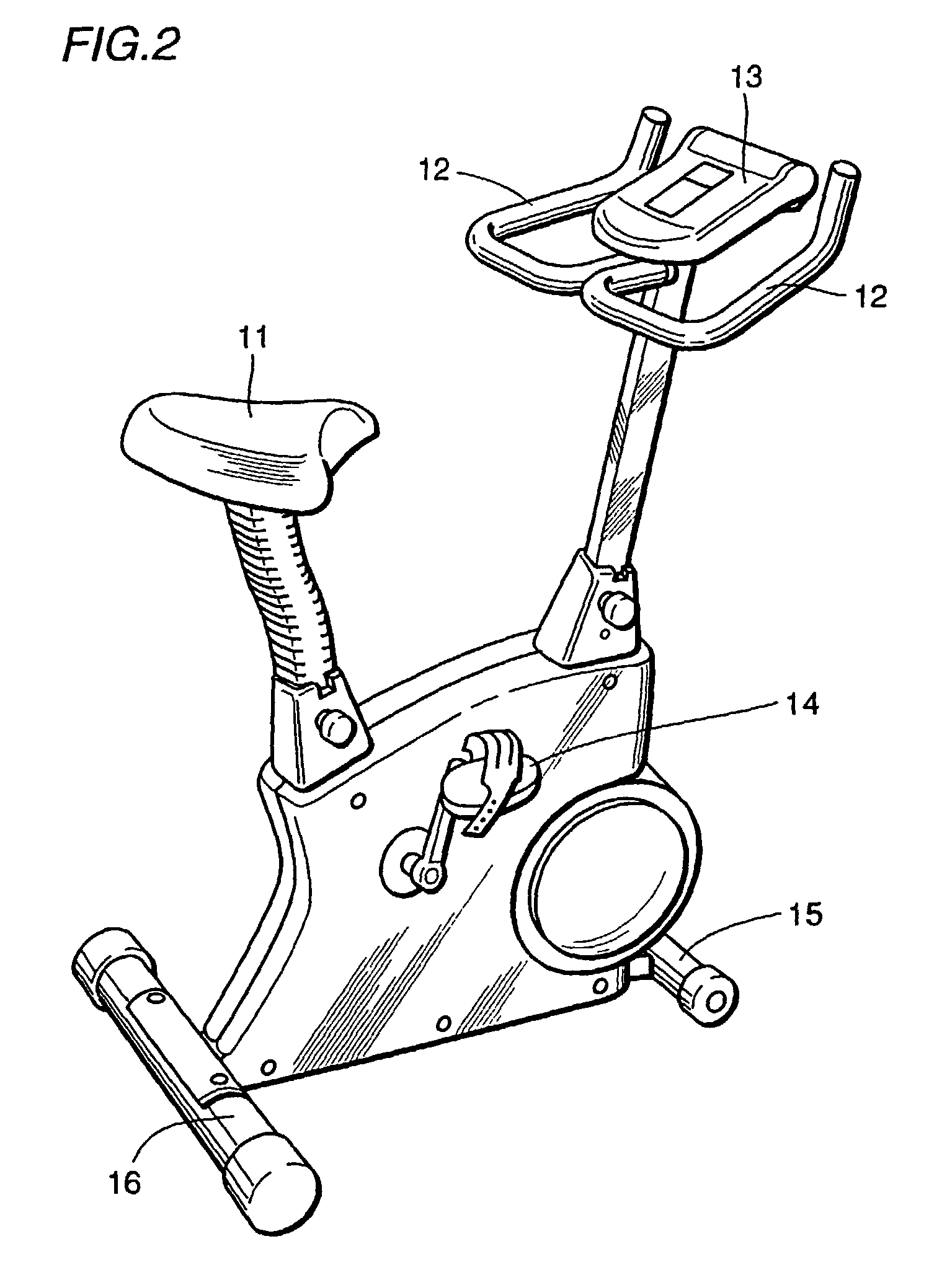Exercise machine, physical strength evaluation method and pulse rate meter
- Summary
- Abstract
- Description
- Claims
- Application Information
AI Technical Summary
Benefits of technology
Problems solved by technology
Method used
Image
Examples
first embodiment
(1) First Embodiment
[0055]FIG. 1 is a block diagram showing a circuit configuration of a bicycle ergometer that is an example of the exercise machine according to the first embodiment of the present invention. This ergometer includes an electrocardiographic sensor 1 detecting an electrocardiographic signal; a preamplifier 2 amplifying the output signal; a filter 3 removing noise; an amplifier 4 further amplifying the electrocardiographic signal to an appropriate level, an A / D converter 5; a CPU 6 performing various kinds of processing; a key input device 7; a display 8; and a load device (applying a rotation load) 9.
[0056]FIG. 2 is a perspective view of the bicycle ergometer according to this embodiment. Referring to FIG. 2, the bicycle ergometer includes: a saddle 11; a handle 12; a manipulation unit 13; pedals 14; a front foot frame 15; and a hind foot frame 16. Manipulation unit 13 includes key input device 7 and display 8 (See FIG. 1). With this ergometer, a test subject (an exe...
second embodiment
(2) Second Embodiment
[0086]Hereinafter, the second embodiment of the present invention will be described. In the second embodiment, the anaerobic threshold is estimated utilizing a power of the fluctuation of heartbeat rate intervals. A bicycle ergometer being used and data being obtained from a test subject in the second embodiment are similar to those in the first embodiment.
[0087]FIG. 18 is a flow chart showing contents of electrocardiographic signal processing according to the second embodiment. Referring to FIG. 18, in this embodiment, the electrocardiographic signal at rest is first detected (ST51). Calibration is then conducted, start of measurement is displayed, and load control is started (ST52-ST54). The steps heretofore are the same as in the first embodiment.
[0088]In the second embodiment, the peak of the electrocardiographic signal from eletrocardiographic sensor 1 is detected, and RR interval data (one cycle of the heartbeat rate) is calculated. Based on the RR interva...
third embodiment
(3) Third Embodiment
[0092]Now, the third embodiment of the present invention will be described. A load of exercise may be controlled employing an oxygen intake, which is calculated from a load upon appearance of the anaerobic threshold detected by a method of either the first or the second embodiment. The oxygen intake (VO2) is calculated from the load at the time of appearance of the AT using a conversion formula, and VO2 per 1 kilogram of weight is obtained.
[0093]For example, when a person weighing 70 kg exercises with a bicycle ergometer and the AT appears at 100W, then the oxygen intake 13 calculated by the following expression (4):
VO2 (ml / kg / min)=load(W)÷0.232×14.3÷5.0÷weight(kg) (4)
[0094]Herein, 0.232 means that the exercise efficiency of the bicycle ergometer is 23.2%. 14.3 is a conversion coefficient of 1 watt=14.3 cal / min. 5.0 is a conversion coefficient meaning that 5.0 kcal is consumed with the oxygen consumption of 1 litter. The operation result is as follows:
VO2 (ml / kg...
PUM
 Login to View More
Login to View More Abstract
Description
Claims
Application Information
 Login to View More
Login to View More - R&D
- Intellectual Property
- Life Sciences
- Materials
- Tech Scout
- Unparalleled Data Quality
- Higher Quality Content
- 60% Fewer Hallucinations
Browse by: Latest US Patents, China's latest patents, Technical Efficacy Thesaurus, Application Domain, Technology Topic, Popular Technical Reports.
© 2025 PatSnap. All rights reserved.Legal|Privacy policy|Modern Slavery Act Transparency Statement|Sitemap|About US| Contact US: help@patsnap.com



